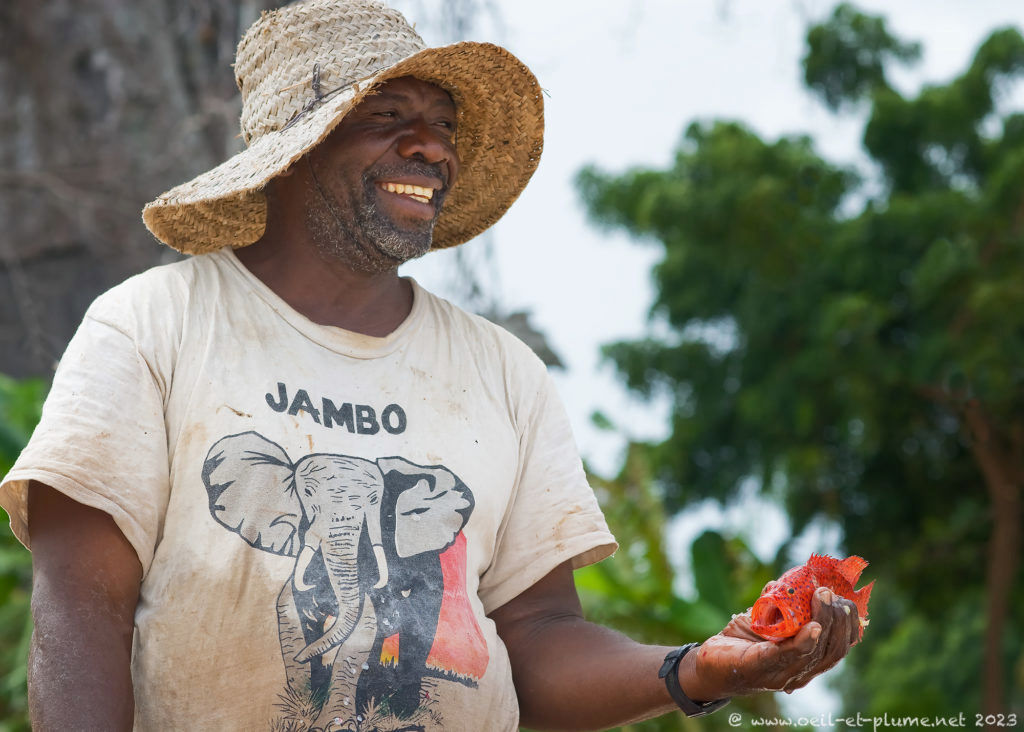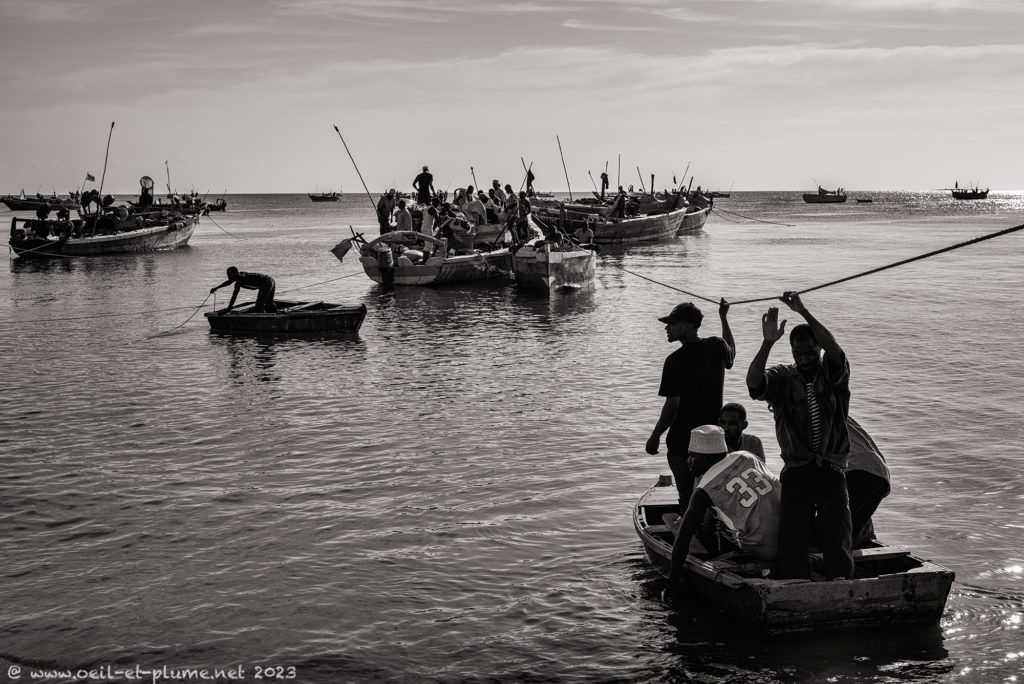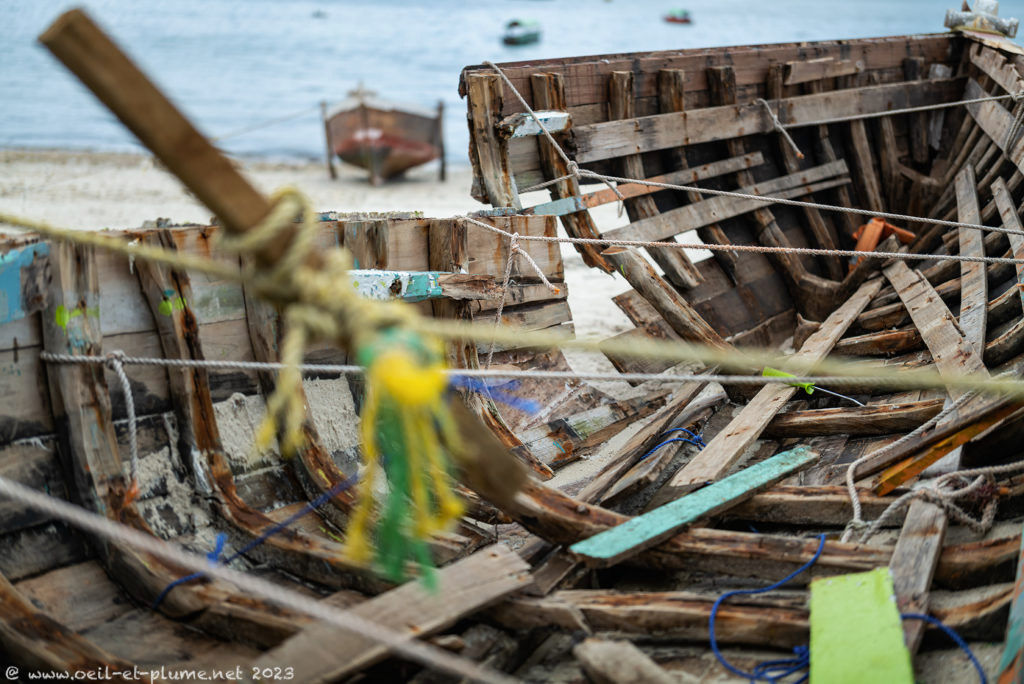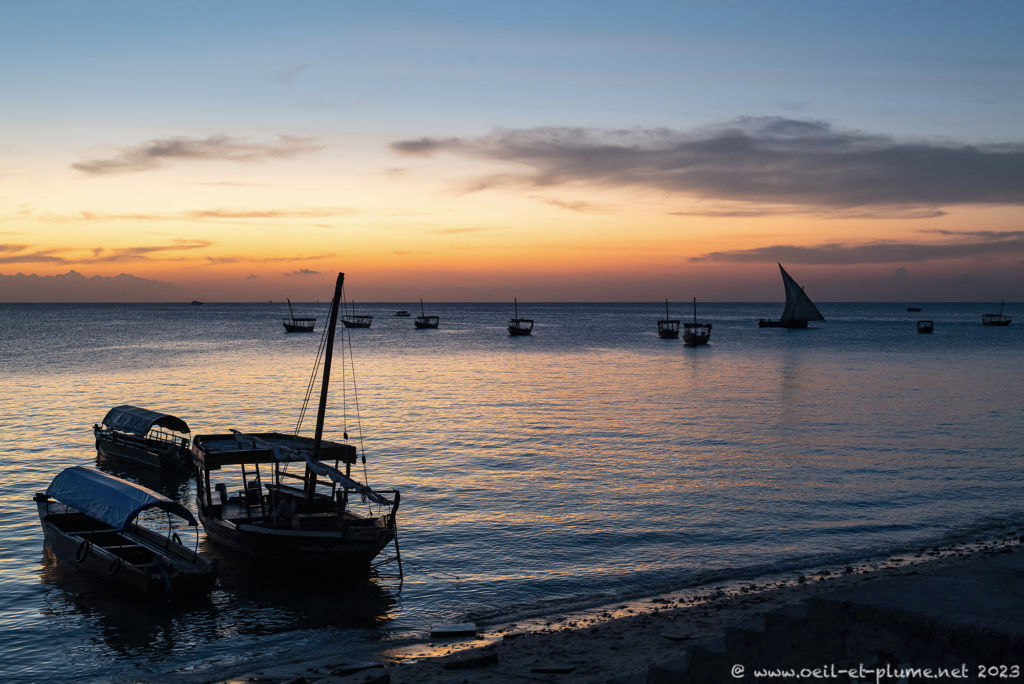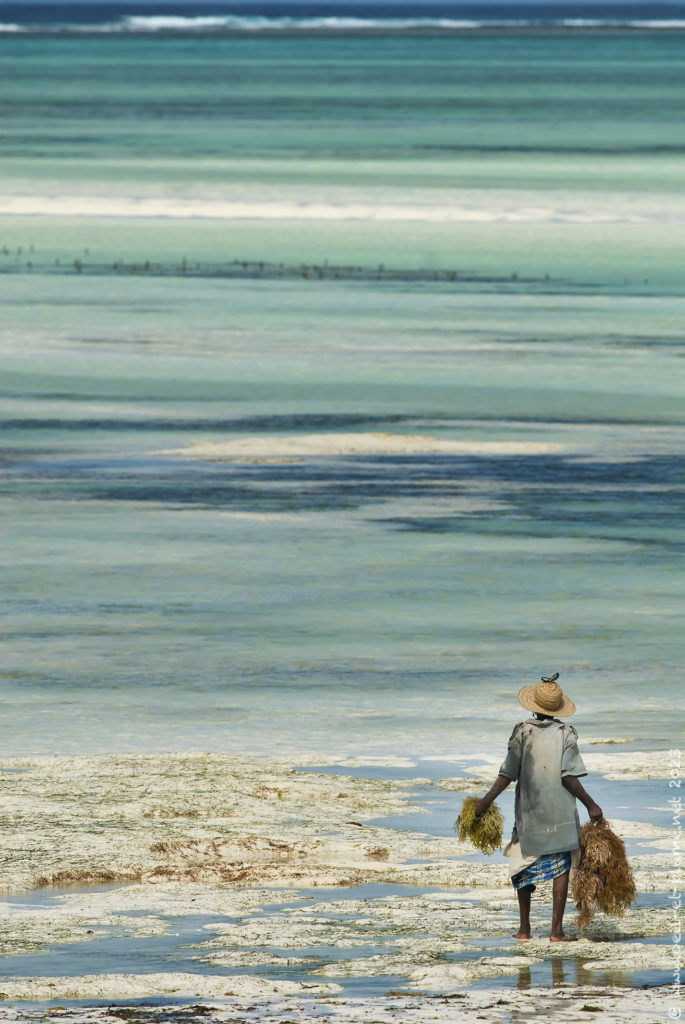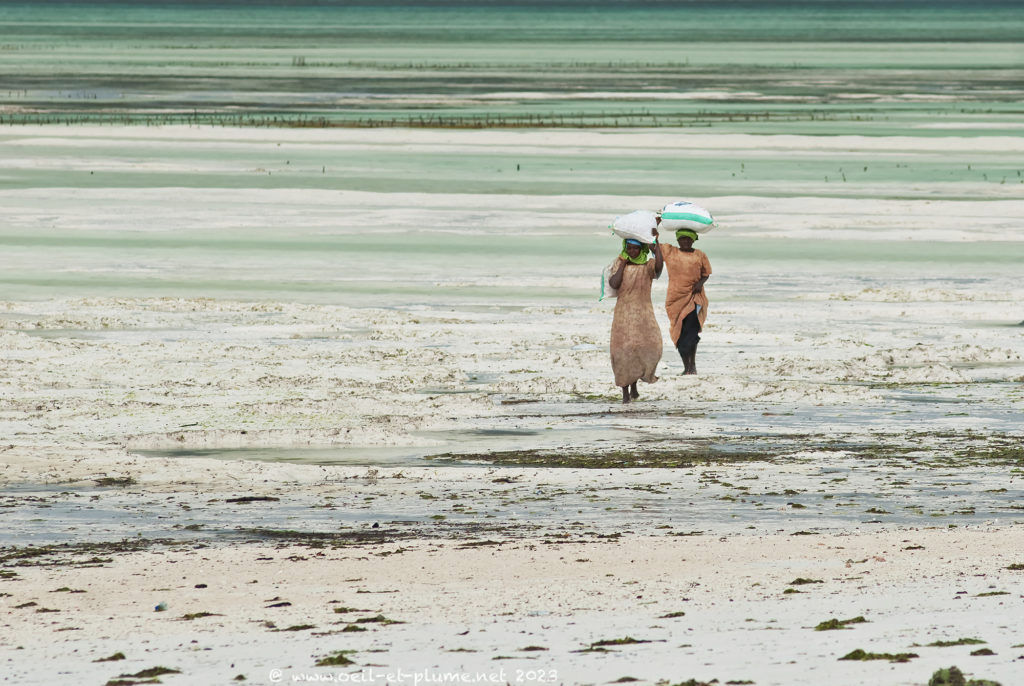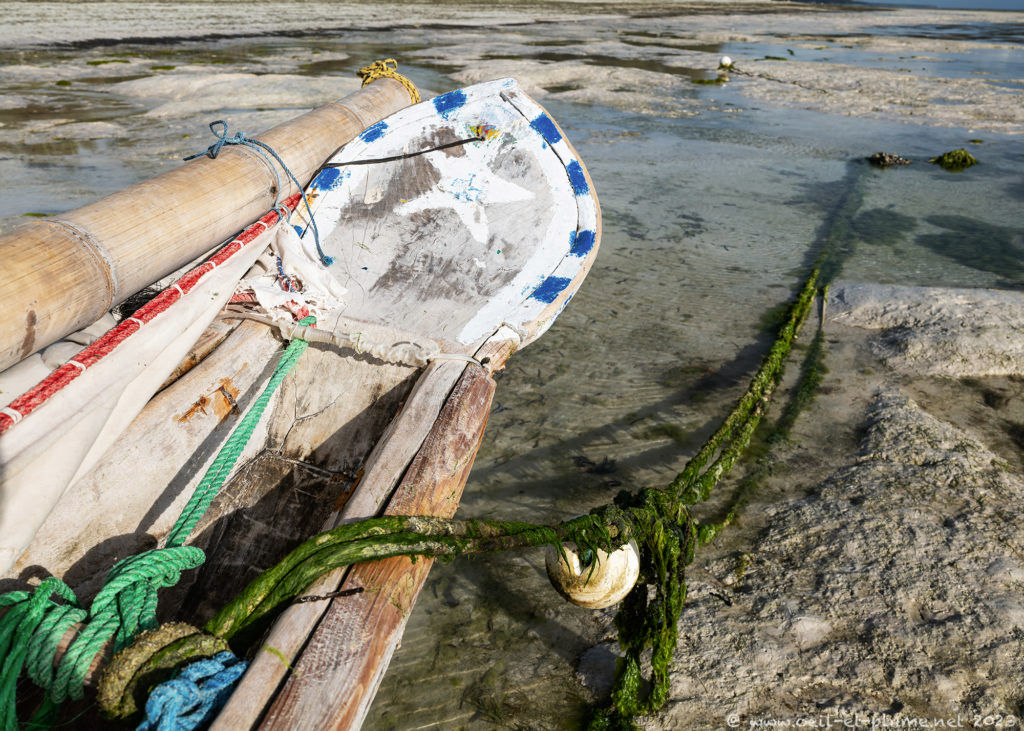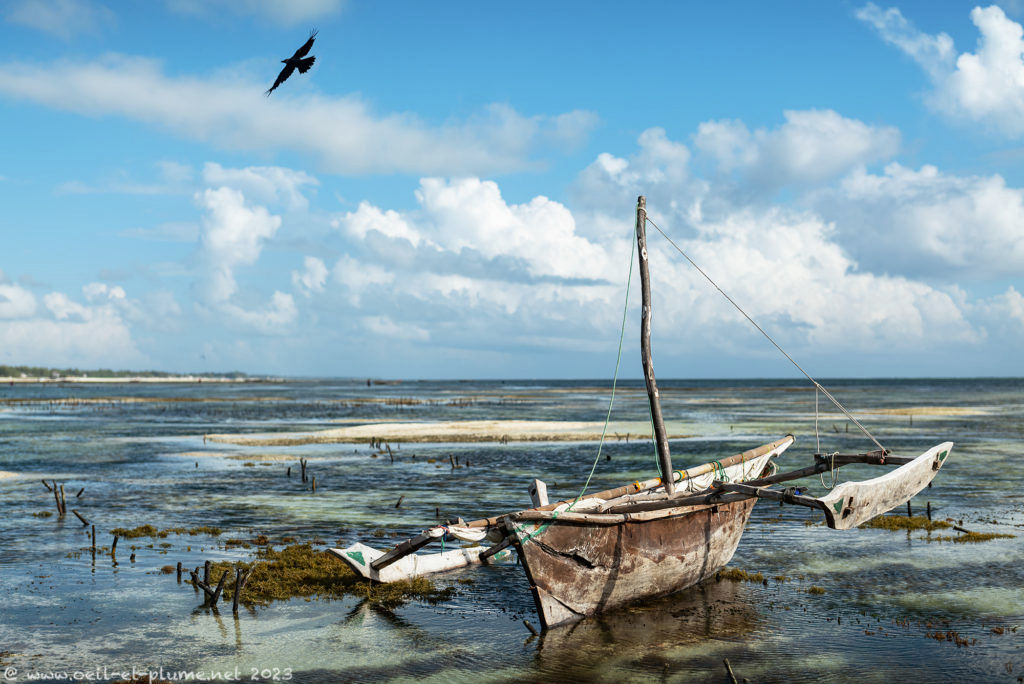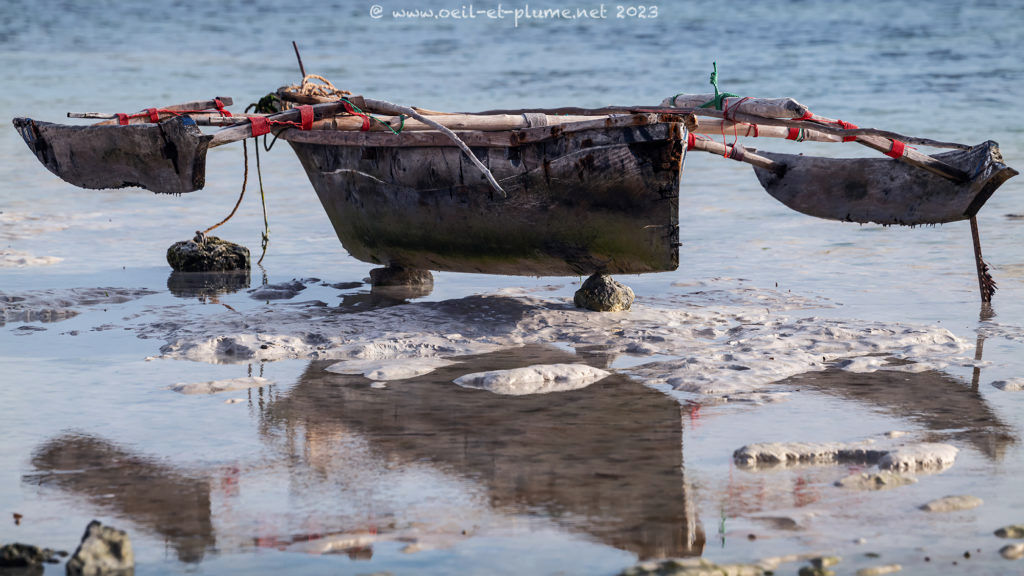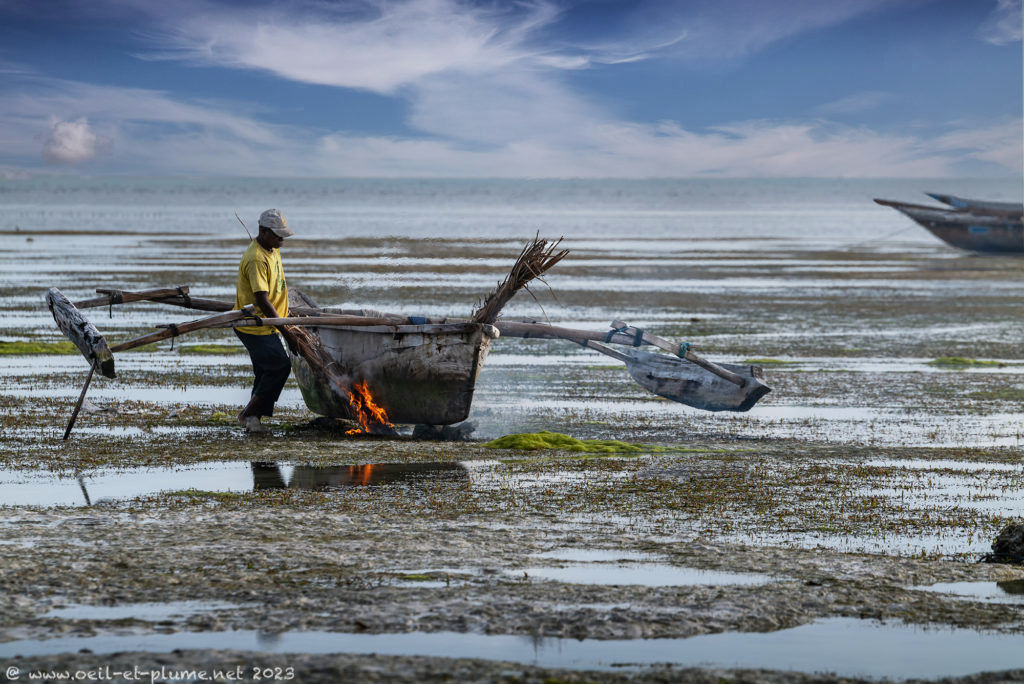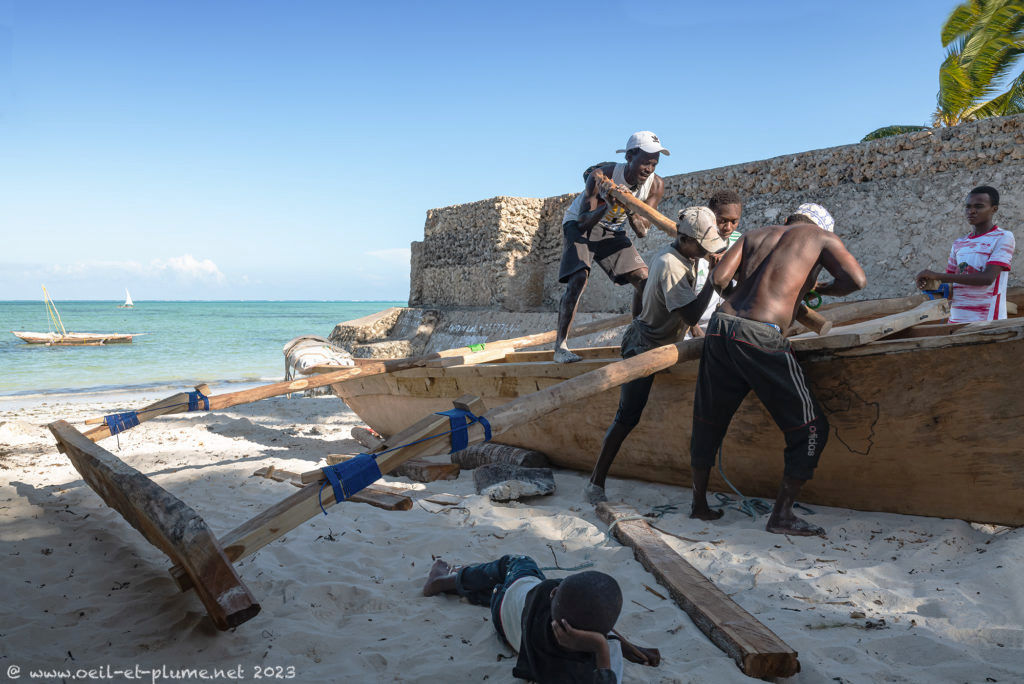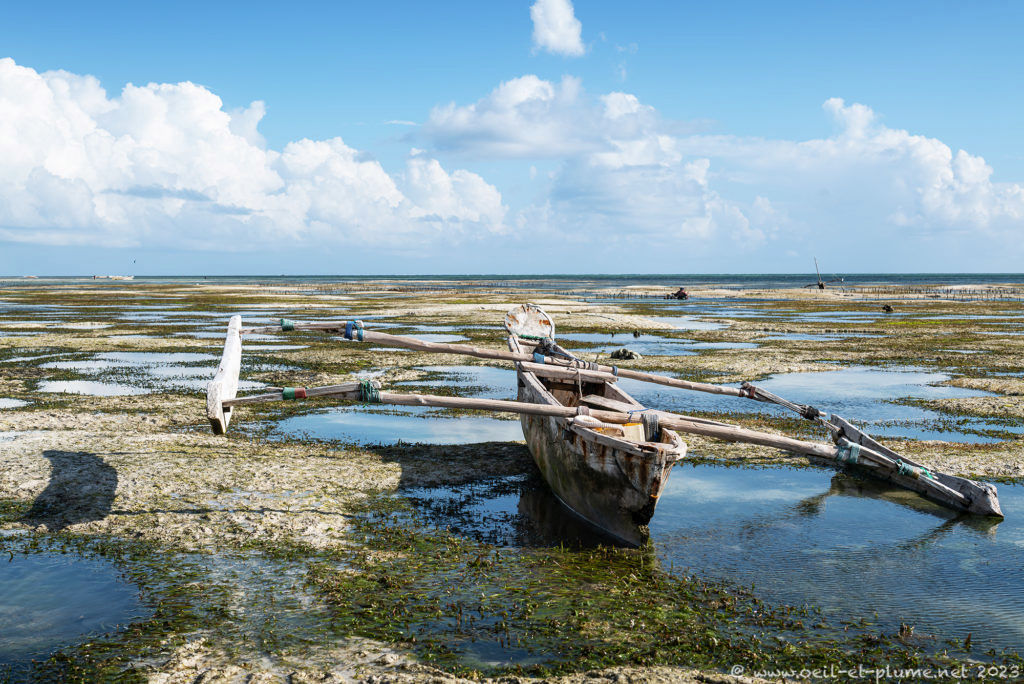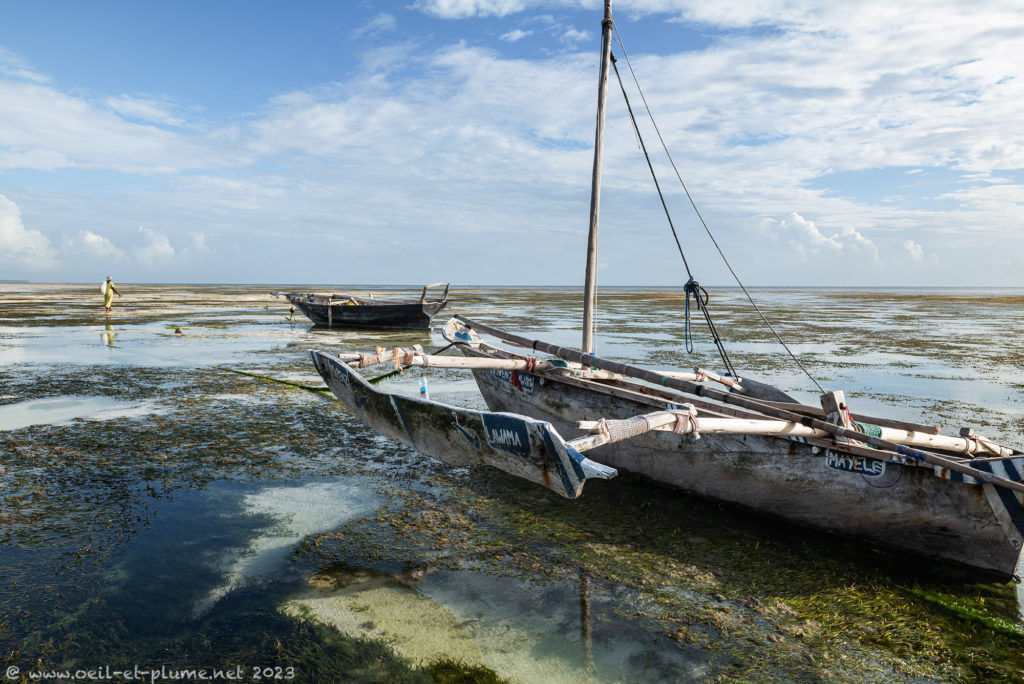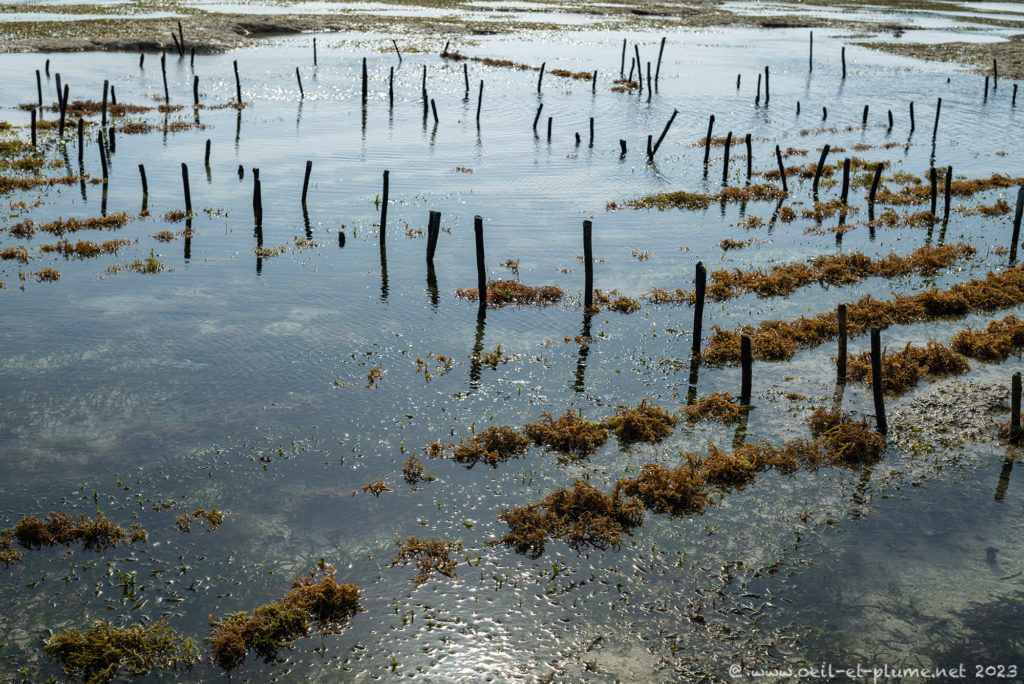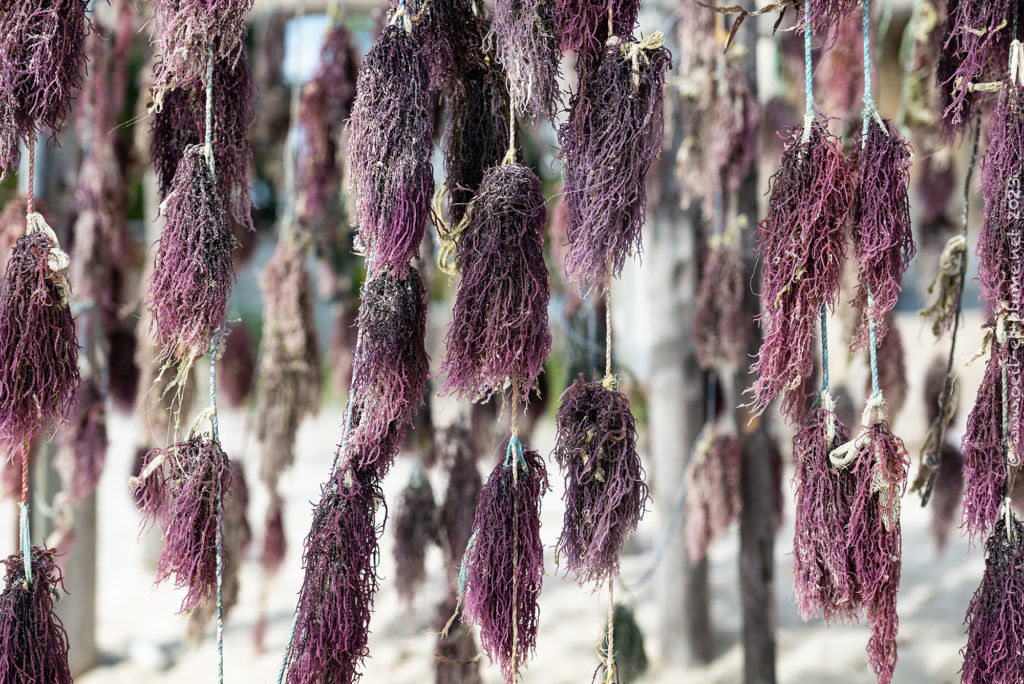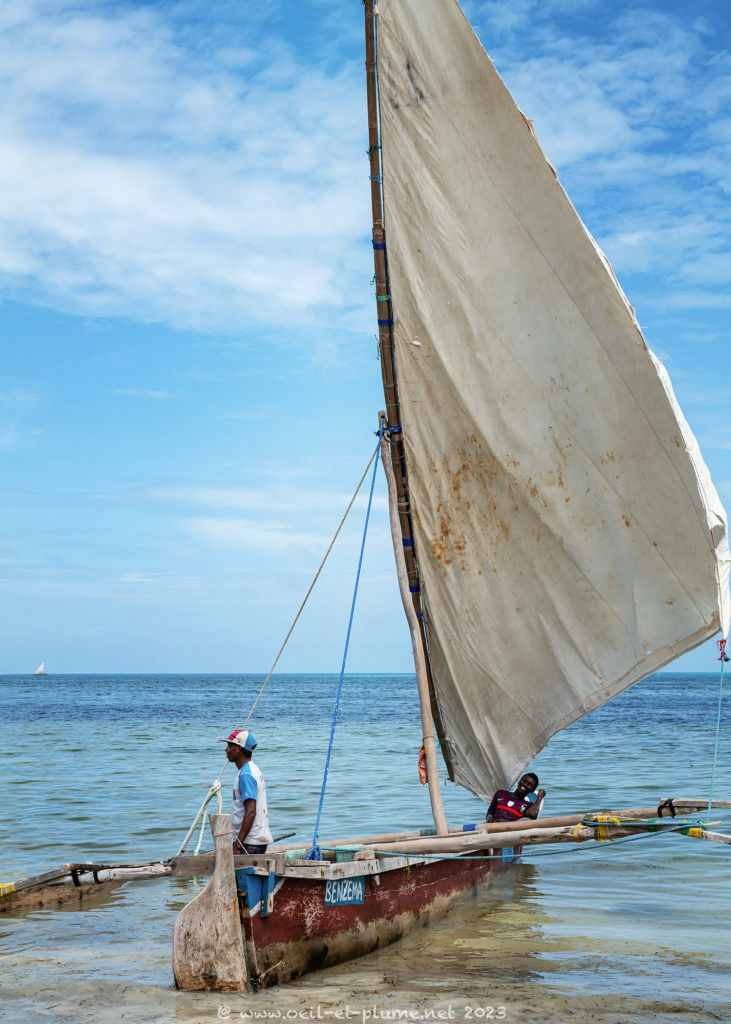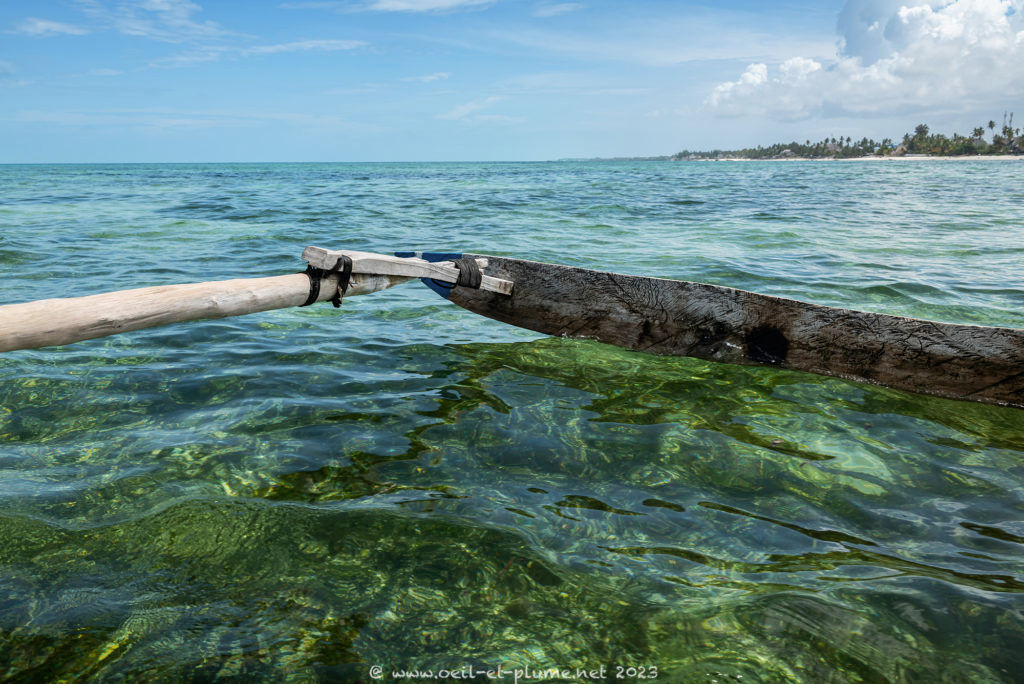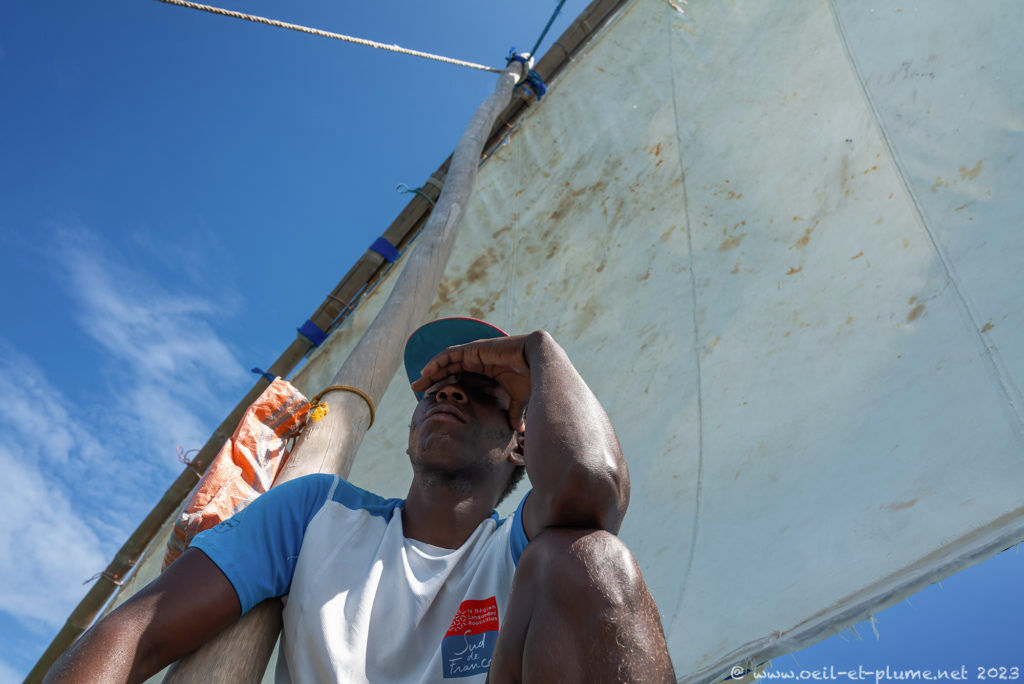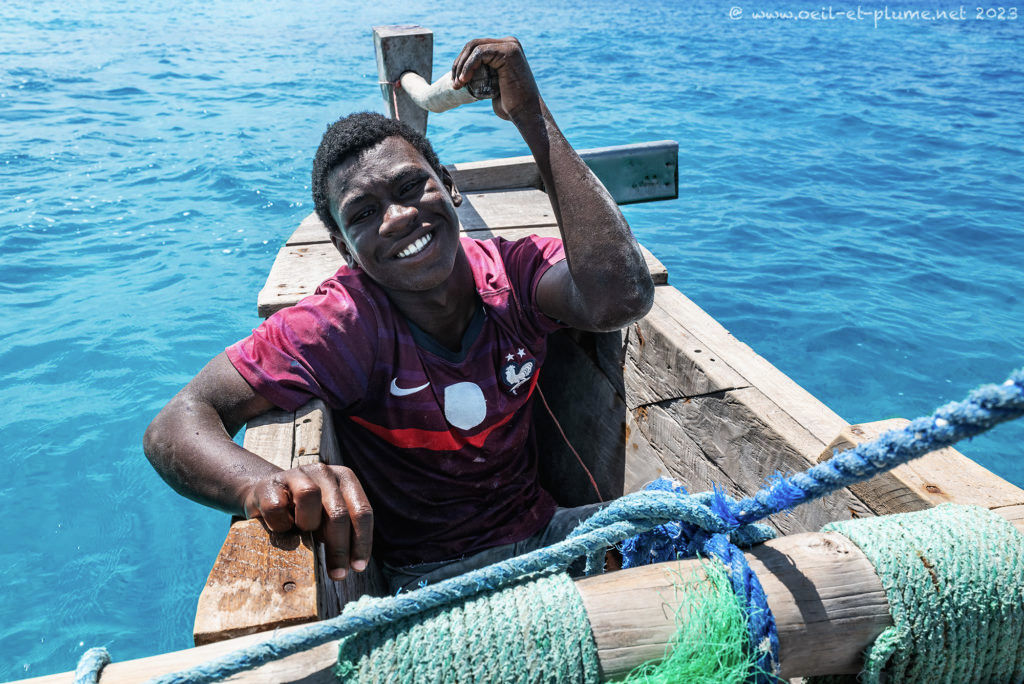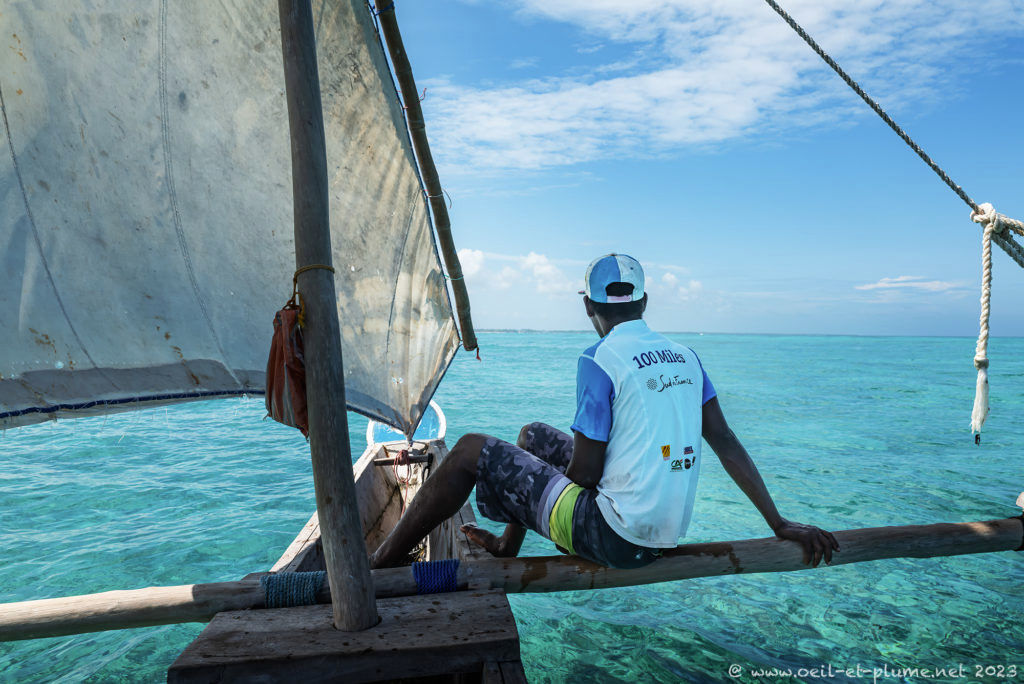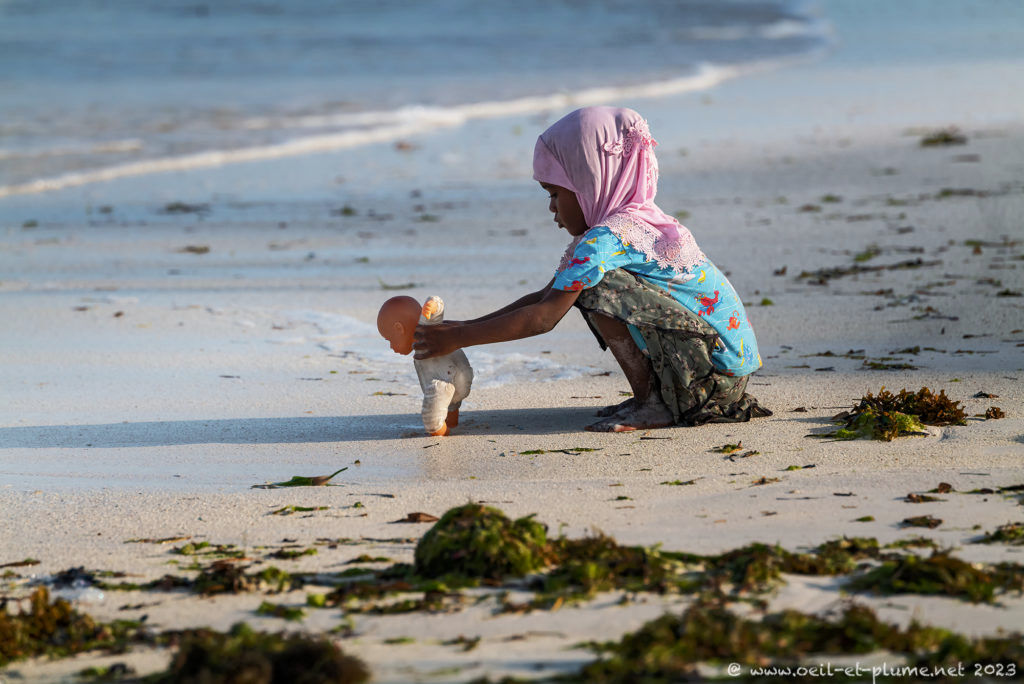“Jambo! See this red fish! It is not my biggest catch today indeed, but isn’t it cute?”
Stone Town harbour
No one would dare contradicting the fisherman met in Stone Town port. Stone Town extends its feet into the water of the Indian Ocean. It does so leisurily or lazily along the main beach. The latter used to be a social gathering point for local people; nowadays, it resemble more to a market place for tourism services.
The real fisherman harbour lays further away from the city centre. There, a myriad of wooden boats are anchored near the coastal line, resting in-between their daily outings. In a search for speed, the dhows are propelled by motor engines, contrary to their ancestors. As I miss the beautiful triangular sails of the traditional dhows navigating along the eastern African coast including Zanzibar, I set off to other locations in Unjuga island.
Low-tide sceneries
Back in 2008, I met an old man on the oriental coast of Unjuga island. As the retired fisherman was too old to sail, he was collecting and selling seaweed to earn his living. His burnt eyes and skin as well as his croacky voice bored the scars of his harsh outdoor life. It was a beautiful social encounter. Since then, the old man is hosted in my travel memory, alongside the strong local women harvesting seaweed during low tide.
I would have loved meeting the old man again. I did not manage to locate him this time, unfortunately. In turn, I met many younger local fishermen on the beach, who were mostly busy maintaining their dhow. They use fire to eradicate the green alga which incrusts the inner and outer parts of their dhow.
Although the iconic views of Unjuga’s eastern coast are mostly created with high-tide pristine waters, I find an inescapable poetry in the low-tide sceneries. Sand, water and plants merge into splendid impressionist paintings. Dhows standing oddly but with dignity on the flat sandbank, waiting to be recalled at work by the Ocean.
Dhows are nearly as old as sailing navigation in the Indian Ocean. Starting from one thousand years ago, they spread from Arabic countries throughout the Indian Ocean region. For centuries, many of them were built in India’s Kerala, where appropriate timber, natural rope and building skills were readily available. Nowadays, Zanzibar’s dhows are built with local mango tree wood. Because timber is scarce in Zanzibar, the trees are cut under strict control of the local authorities. To save on wood material, the main body of the dhow is assembled, and not carved out directly from a tree trunk.
Seaweed farming
In 2008, seaweed collection along the eastern coast of Unjugu island during low tides was anecdotical. Since then, it developped into a robust commercial aquaculture of red algae. The various species grown are used to produce various industrial, pharmaceutical, or food products.
Seaweed farming does not require much equipment. As seaweed grows fast, the production can be harvested within short periods of time. Seaweed aquaculture represents nowadays a major source of income for local communities. Its environmental impact, both positive and negative, remains understudied and uncertain.
Dhow sailing
“Ready for a dhow outing until the coral reef?” I do not resist the fisherman’s proposal. Amongst the many dhow types, the zaroug is famous for its speed and manoeuvrability. It was once the favourite boat of the pirates, smugglers and slave trafiquants. Nowadays, it remains popular for fishing and even sailing races.
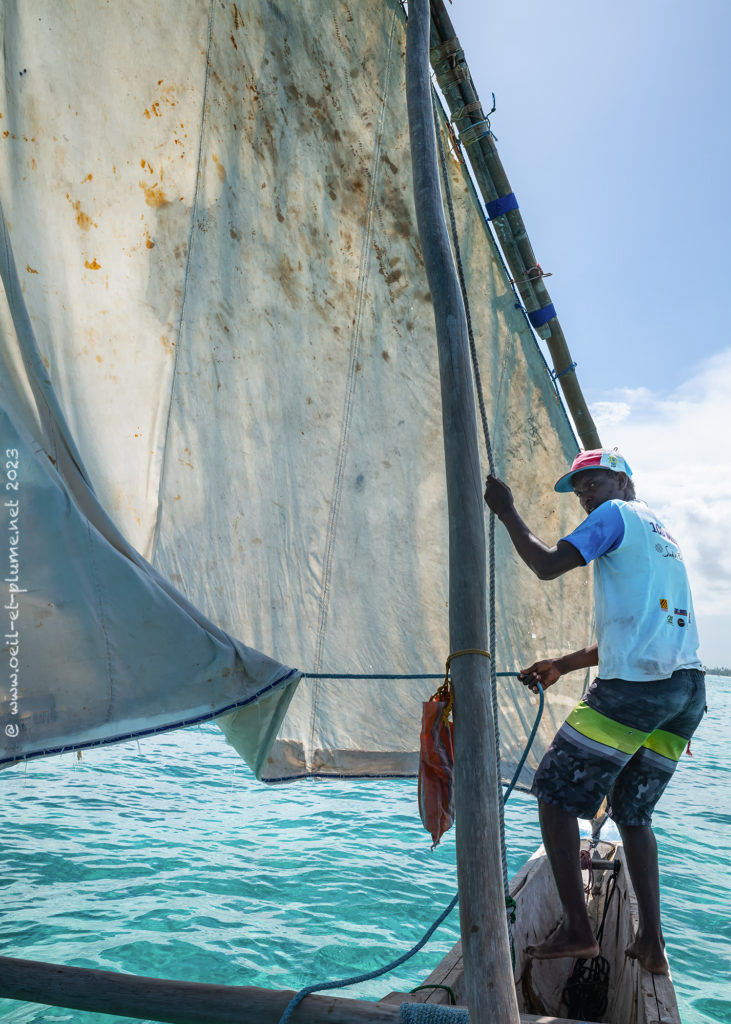
The zaroug is fundamentally an outrigger canoe equipped with a triangular sail. It is built with a concern for robustness and lightness rather than finesse. It surfs on the water with an outstanding facility and at an incredible speed. To manoeuvre the boat requires rather acrobatic gestures. The sailing experience provides also moments of indicible serenity, in communion with robust winds and pristine waters.
Kite surfing
“Look over there: a kite surfer!” This is another novelty in the area compared to my 2008 stay. Since then, the eastern coast of Unjuga island has turned into one of the world’s hotspots for kite surfing. As a matter of fact, kite surfing is a very young sport, born in the late 1970’s. It combines skills used in snowboarding, windsurfing, paragliding and surfing.
Would I live in Unjuga island, I would definitely practice kiteboarding. I love the idea to ride a surfboard propelled by a kite, to surf the waves while harnessing the power of the wind. I imagine the awesome sensations experienced while standing on a narrow and short board, holding firm bar and ropes, flying over the water and jumping into the air. One day somewhere for sure…
Back to the beach, normal local life goes on, recalling the fundamentals of our existence. To me, what makes Zanzibar archipelago so special is not only the cultural fusion that took place over the centuries, but also the fact that social life and its water environment are intimately embedded.
Water is life.
Cheers,
